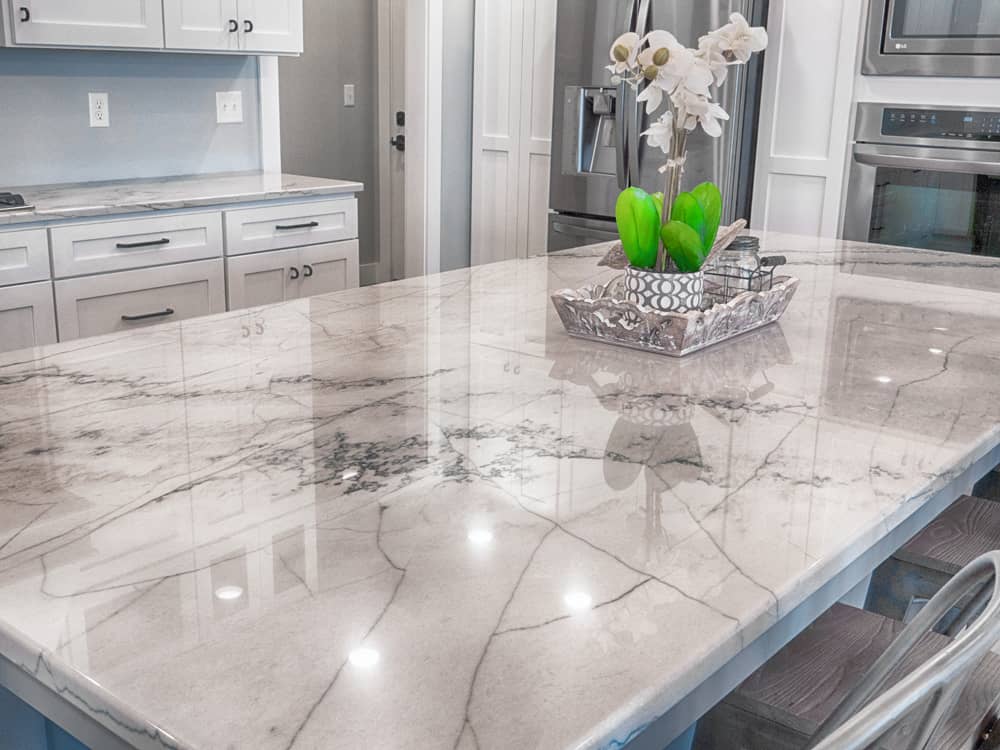When it involves choosing kitchen countertops, there are various alternatives to be had, each with its specific characteristics and attractions. Two popular alternatives regularly considered are quartzite and granite. While both substances provide sturdiness and aesthetic price, they range in numerous aspects that could significantly affect your kitchen layout and capability. In this article, we can explore three key methods wherein quartzite kitchen countertops vary from granite countertops which will help you make an informed selection for your kitchen renovation or production challenge.

Composition and Formation
Quartzite and granite may additionally sound similar because of their names, however, they’re awesome natural stones with specific origins and compositions.
Granite:
Granite is an igneous rock, which means that it formed from the cooling and solidification of molten magma deep in the Earth’s crust.
It is in general composed of minerals which include quartz, feldspar, and mica.
Granite’s particular look is characterized by its speckled and granular texture, with diverse colorations and styles relying on the mineral composition.
The hardness of granite makes it an outstanding choice for kitchen countertops, as it can resist each day wear and tear, warmness, and scratches.
Quartzite:
Quartzite, on the other hand, starts as sandstone but undergoes a metamorphic procedure due to massive warmth and pressure within the Earth’s crust.
This technique recrystallizes the sand grains and cements them collectively with silica to create a tougher and denser stone.
Quartzite consists of quartz crystals, resulting in a glassy and sparkling look.
Its natural strength and resistance to warmness and acids make it a suitable option for kitchen countertops.
Key Difference:
The primary difference in composition is the better quartz content in quartzite compared to granite. This higher quartz content contributes to quartzite’s precise appearance and sturdiness, making it an appealing desire for homeowners looking for an herbal stone countertop that can resist the rigours of daily kitchen use.
Appearance and Design Options
Both quartzite and granite provide a wide range of coloration and pattern alternatives, permitting owners to pick a stone that complements their kitchen decor. However, there are brilliant differences in their appearances and layout possibilities.
Granite:
Granite countertops exhibit a numerous array of colours and patterns, which include specks, veins, and swirls.
The colour versions in granite are determined by the mineral composition and geological elements, resulting in a more natural and unpredictable look.
Some granite types may additionally have extra dramatic veining or motion, while others are extra regular in pattern.
Quartzite:
Quartzite countertops tend to have a greater constant and uniform look compared to granite.
Their hallmark is a crystalline and sparkling surface that could resemble the appearance of beaten ice.
While quartzite colour alternatives are incredibly restrained compared to granite, it offers a clean and stylish aesthetic that appeals to those looking for a swish and modern kitchen design.
Key Difference:
The key distinction in appearance lies within the predictability and uniformity of quartzite in comparison to the natural variations of granite. Homeowners who pick a more consistent and cutting-edge look may additionally lean toward quartzite, while those who appreciate the beauty of natural imperfections may choose granite.
Maintenance and Durability
The durability and maintenance requirements of your kitchen countertops are important factors to keep in mind whilst choosing between quartzite and granite.
Granite:
Granite is renowned for its durability and resistance to heat, scratches, and stains.
It calls for everyday sealing to hold its protecting barrier and prevent capacity staining, particularly with lighter-coloured varieties.
Proper care, inclusive of routine cleansing and sealing, can assist granite countertops in keeping their splendour and sturdiness.
Quartzite:
Quartzite is similarly durable and can resist the needs of a busy kitchen.
It is much less porous than a few granite sorts, making it less liable to staining.
While sealing is commonly recommended for quartzite, it may require less frequent sealing compared to positive granites.

Key Difference:
Both quartzite and granite offer wonderful durability, but quartzite’s barely decreased porosity could make it a greater forgiving option on the subject of staining. However, the right sealing and upkeep are still vital for each material to ensure their durability and performance within the kitchen.
Conclusion
Choosing the proper kitchen countertop cloth includes thinking about various factors, inclusive of composition, appearance, design options, maintenance, and sturdiness. While each quartzite and granite are exquisite picks with their precise attributes, it is critical to understand their differences to make an informed selection that aligns with your alternatives and lifestyle.
Quartzite, with its higher quartz content material, gives a consistent look and a glowing, glassy surface that appeals to those in search of a sleek and cutting-edge kitchen design. Its sturdiness and resistance to staining make it an attractive alternative for homeowners with busy kitchens.
Granite, however, provides a wide range of colours and natural styles, celebrating the beauty of imperfections. It is renowned for its sturdiness and may resist day-by-day wear and tear, making it a brilliant choice for traditional and traditional kitchen designs.
Ultimately, the choice between quartzite and granite relies upon your aesthetic alternatives, upkeep considerations, and the way nicely the cloth aligns with your kitchen’s design concept. Whichever stone you pick, both quartzite and granite have the potential to beautify your kitchen’s beauty and functionality for years yet to come.

